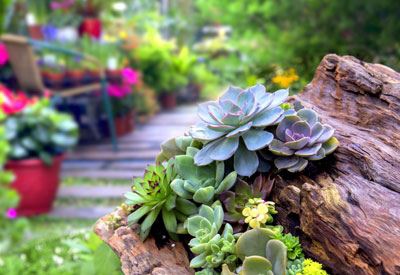Maintaining rich green landscapes, especially during the dry months of summer, can be a challenge.
Good organic practice is at the heart of keeping things green and thriving. It requires planning, good soil with proper amendments, and careful mowing and pruning. Here are a few suggestions for keeping your landscaping green all growing season long.
Watering your landscape efficiently means keeping your plants at their best while conserving water. Consider drip irrigation which is shown to be 90-95% effective in delivering water (as opposed to 70% for sprinklers). Or try hand watering with a hose or a watering can.
When Mother Nature doesn’t deliver, your garden doesn’t have to suffer. We’ve got backup watering equipment and tools that will keep your garden from going thirsty.
Choose flowering plants that blossom throughout the summer. Keep color in your garden by planting flowers and other plants with long blooming phases, including impatiens, geraniums, and begonias (most of these are especially good in pots). Or choose flowers that bloom during different parts of the summer such as early-blooming peonies and later-blooming bearded iris. Keep flowers, such as black-eyed Susans, picked to encourage longer blooming. Mix-and-match plants that bloom at different times of the season. Add small or dwarf evergreen trees and shrubs to keep things green as blossoms fade.
Herbs, many of which originated in the dry Mediterranean climate add greenery and blossom color, without using much water.
Regular additions of compost help your soil’s water retention capabilities while adding valuable microbes that help plants utilize. Use organic fertilizers as necessary to make sure plants have the macro and micro-nutrients they need to survive hot dry spells.
Mulch your landscape plants. Mulch helps keep the soil cool and retain water. It also encourages worms, microbes, and other organisms that keep soil healthy. As it decays, it adds organic material back to the earth.


